Intro
Walking pneumonia treatment often involves antibiotics, targeting atypical bacteria like Mycoplasma, with medications like azithromycin, clarithromycin, or fluoroquinolones, relieving symptoms and preventing complications.
Walking pneumonia, also known as atypical pneumonia, is a type of pneumonia that is not as severe as traditional pneumonia. It is called "walking" pneumonia because its symptoms are often mild enough that one can still be walking around rather than being bedridden. Despite its mild nature, walking pneumonia can still have a significant impact on daily life and requires proper treatment to prevent complications. One of the primary treatments for walking pneumonia is antibiotics, which are used to target the bacterial causes of the infection.
The importance of treating walking pneumonia with antibiotics cannot be overstated. If left untreated, walking pneumonia can lead to more severe complications, such as respiratory failure, which can be life-threatening. Furthermore, untreated walking pneumonia can also lead to the spread of the infection to others, making it a public health concern. Therefore, it is crucial to seek medical attention if symptoms of walking pneumonia persist or worsen over time. A healthcare professional can diagnose walking pneumonia and prescribe the appropriate antibiotics to treat the infection.
Walking pneumonia is typically caused by bacteria such as Mycoplasma pneumoniae, Chlamydophila pneumoniae, and Legionella pneumophila. These bacteria are usually spread through respiratory droplets, such as those produced by coughing or sneezing. The symptoms of walking pneumonia can vary, but common signs include a persistent cough, fever, headache, and fatigue. In some cases, walking pneumonia can also cause chest pain, sore throat, and runny nose. If you are experiencing any of these symptoms, it is essential to seek medical attention to determine the best course of treatment.
Understanding Walking Pneumonia
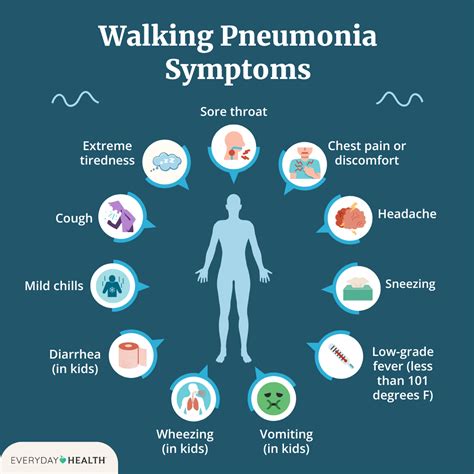
Walking pneumonia is a type of pneumonia that is not caused by the traditional bacteria that cause pneumonia, such as Streptococcus pneumoniae. Instead, it is caused by atypical bacteria, which are bacteria that do not respond to traditional antibiotics. The most common causes of walking pneumonia are Mycoplasma pneumoniae, Chlamydophila pneumoniae, and Legionella pneumophila. These bacteria are usually spread through respiratory droplets, such as those produced by coughing or sneezing.
Causes and Risk Factors
The causes of walking pneumonia are varied, but the most common cause is Mycoplasma pneumoniae. This bacteria is usually spread through respiratory droplets, such as those produced by coughing or sneezing. Other causes of walking pneumonia include Chlamydophila pneumoniae and Legionella pneumophila. These bacteria can also be spread through respiratory droplets, as well as through contaminated water and soil.Diagnosing Walking Pneumonia
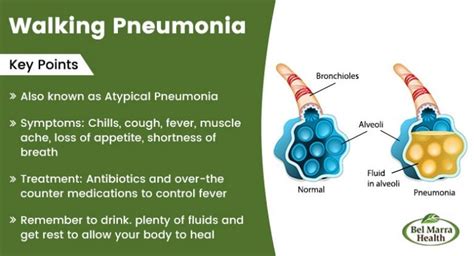
Diagnosing walking pneumonia can be challenging, as the symptoms are often similar to those of other respiratory infections. A healthcare professional will typically perform a physical examination and take a medical history to determine the cause of the symptoms. They may also order diagnostic tests, such as a chest X-ray or blood tests, to confirm the diagnosis.
Diagnostic Tests
There are several diagnostic tests that can be used to diagnose walking pneumonia. These include:- Chest X-ray: This test uses X-rays to produce images of the lungs and can help to identify any abnormalities, such as inflammation or fluid buildup.
- Blood tests: These tests can help to identify the presence of bacteria or other infections in the blood.
- Sputum tests: These tests involve collecting a sample of mucus from the lungs and can help to identify the presence of bacteria or other infections.
Treatment Options for Walking Pneumonia
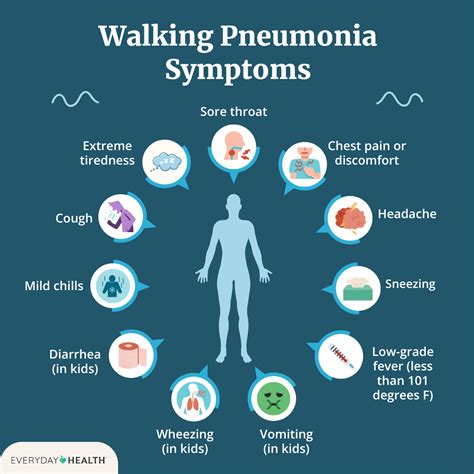
The primary treatment for walking pneumonia is antibiotics. These medications are used to target the bacterial causes of the infection and can help to reduce the severity of symptoms and prevent complications. The type of antibiotic used will depend on the cause of the infection and the severity of the symptoms.
Antibiotics for Walking Pneumonia
There are several antibiotics that can be used to treat walking pneumonia. These include:- Azithromycin: This antibiotic is commonly used to treat walking pneumonia caused by Mycoplasma pneumoniae and Chlamydophila pneumoniae.
- Clarithromycin: This antibiotic is commonly used to treat walking pneumonia caused by Mycoplasma pneumoniae and Chlamydophila pneumoniae.
- Doxycycline: This antibiotic is commonly used to treat walking pneumonia caused by Mycoplasma pneumoniae and Chlamydophila pneumoniae.
Preventing Walking Pneumonia
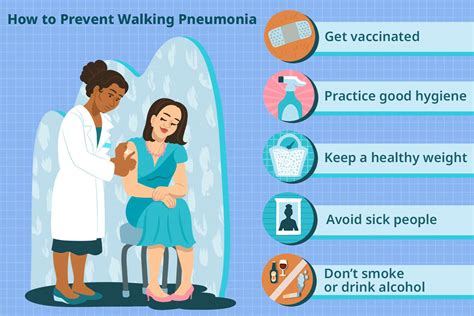
Preventing walking pneumonia is crucial to reducing the risk of complications and preventing the spread of the infection to others. There are several steps that can be taken to prevent walking pneumonia, including:
- Practicing good hygiene: Washing hands regularly and avoiding close contact with others can help to prevent the spread of the infection.
- Getting vaccinated: Vaccines are available to protect against some of the bacteria that cause walking pneumonia.
- Avoiding smoking: Smoking can increase the risk of developing walking pneumonia and can also exacerbate symptoms.
Complications of Walking Pneumonia
If left untreated, walking pneumonia can lead to several complications, including:- Respiratory failure: This is a life-threatening condition that occurs when the lungs are unable to get enough oxygen.
- Sepsis: This is a life-threatening condition that occurs when the infection spreads to the bloodstream.
- Meningitis: This is a life-threatening condition that occurs when the infection spreads to the membranes surrounding the brain and spinal cord.
Living with Walking Pneumonia
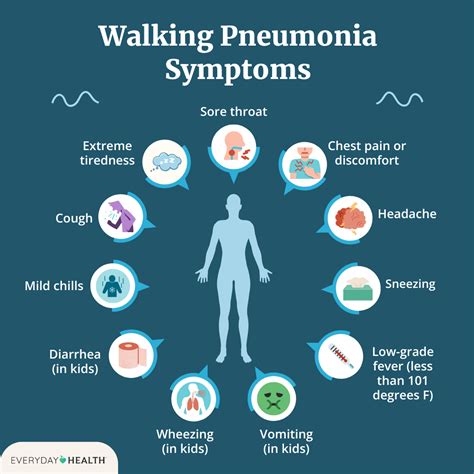
Living with walking pneumonia can be challenging, but there are several steps that can be taken to manage symptoms and prevent complications. These include:
- Getting plenty of rest: Resting can help to reduce the severity of symptoms and prevent complications.
- Staying hydrated: Drinking plenty of fluids can help to thin out mucus and reduce the severity of symptoms.
- Avoiding strenuous activities: Avoiding strenuous activities can help to reduce the severity of symptoms and prevent complications.
Coping with Walking Pneumonia
Coping with walking pneumonia can be challenging, but there are several steps that can be taken to manage symptoms and prevent complications. These include:- Seeking support: Seeking support from family and friends can help to reduce stress and anxiety.
- Practicing stress-reducing techniques: Practicing stress-reducing techniques, such as meditation and deep breathing, can help to reduce stress and anxiety.
- Getting professional help: Getting professional help from a therapist or counselor can help to manage symptoms and prevent complications.
What are the symptoms of walking pneumonia?
+The symptoms of walking pneumonia include a persistent cough, fever, headache, and fatigue. In some cases, walking pneumonia can also cause chest pain, sore throat, and runny nose.
How is walking pneumonia diagnosed?
+Diagnosing walking pneumonia can be challenging, as the symptoms are often similar to those of other respiratory infections. A healthcare professional will typically perform a physical examination and take a medical history to determine the cause of the symptoms. They may also order diagnostic tests, such as a chest X-ray or blood tests, to confirm the diagnosis.
What are the treatment options for walking pneumonia?
+The primary treatment for walking pneumonia is antibiotics. These medications are used to target the bacterial causes of the infection and can help to reduce the severity of symptoms and prevent complications.
If you are experiencing symptoms of walking pneumonia, it is essential to seek medical attention to determine the best course of treatment. With proper treatment and care, it is possible to manage symptoms and prevent complications. We encourage you to share this article with others who may be experiencing similar symptoms, and to comment below with any questions or concerns you may have. By working together, we can raise awareness about walking pneumonia and promote healthy living.
